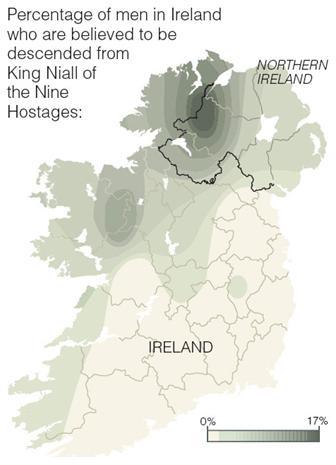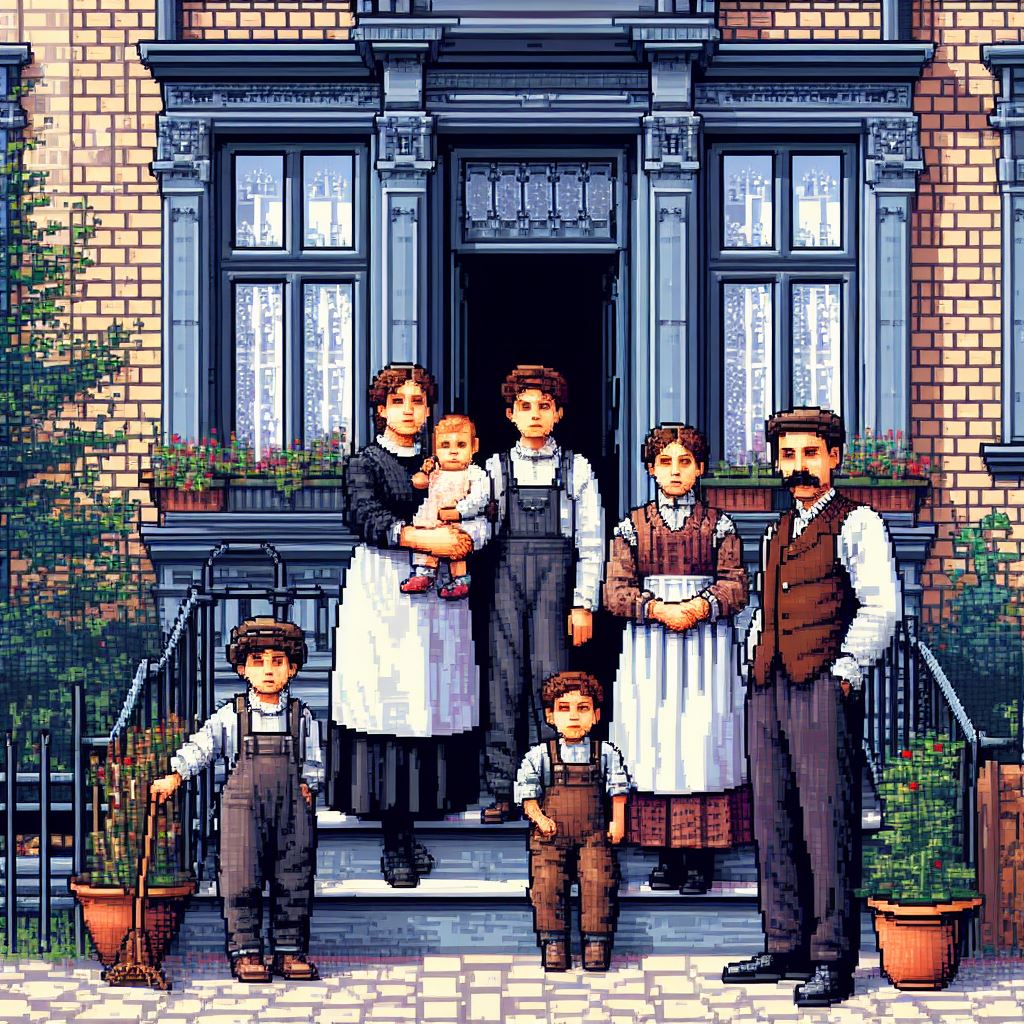I mentioned in a recent post that I was able to get 23andMe tests for my father and my father-in-law that would hopefully help narrow down DNA matches and also find out more about ourselves. Those tests have been taken, sent in, and now finally analyzed. There were no surprising results, but it does help make a clearer picture of certain things.
With my father’s tests, I was also able to get his mtDNA (or Maternal) Line passed down from his mother’s line. The surnames that it follows would be CORRIGAN > BRAATZ > STEARNS > SCHUMACHER > HEINZ > HETTLER and that’s as far as I have right now. It’s basically a deep German line (minus the obvious Irish one in the beginning.) His mtDNA haplogroup is U4, but the subgroup is U4a3. 23andMe says:
Haplogroup U4 is found in western Eurasia, from Mongolia to central Europe. It arose about 25,000 years ago and subsequently spread with the migrations that followed the end of the Ice Age about 14,000 years ago.
[U4a] diverged from its U4 sister lineages about 21,000 years ago in the region surrounding the Baltic Sea. Today it is most common among the people of the Volga River and Ural Mountains of Russia, such as the Chuvash, Kets and Mari. It is also common among the Baltic and Finnish people of northern Europe who speak languages related to the Finno-Ugric tongues of the Volga-Ural region in western Russia.
That didn’t really surprise me. As for the YDNA line, which I also share, what is interesting is that my haplogroup is R1a1a* which usually means they know you’re R1a1a, but more than likely part of a subgroup. My father’s YDNA haplogroup is found to be just R1a1a, technically putting us in separate groups on the site. More than likely their tests are now more accurate and figured out that we’re directly from the R1a1a haplogroup.
My father-in-law’s tests were doubly useful as both the YDNA and mtDNA info was new to us as my wife doesn’t get either of those passed down from him. His mtDNA line, which follows the surnames: COLLINS > HUIZEL > REINDL > BOHM. The research on this line ends in the South Bohemian section the Czech Republic, which I assume was Czechoslovakia at the time. His mtDNA haplogroup is found to be H5.
H5 appears to have originated during the Ice Age, as the human population of Europe retreated to the few relatively mild pockets of the otherwise frozen continent. The haplogroup appears to have sprung up somewhere near the Caucasus Mountains, or in forests near the Black Sea. H5 is particularly common today in Georgia and in other populations from the Caucasus region. Not long after it originated, a few migrants carried H5 along the southern fringes of Europe into the Balkans and as far west as France, where the haplogroup can still be found today.
It seems to line up with the little amount of data we have on that line. His YDNA line, which we assumed was pretty deep Irish as the surname is MORAN, was pretty close to our assumptions. The YDNA haplogroup was found to be (besides the longest one ever) R1b1b2a1a2f*. There is that little asterisk again.
R1b1b2a1a2f2 reaches its peak in Ireland, where the vast majority of men carry Y-chromosomes belonging to the haplogroup. Researchers have recently discovered that a large subset of men assigned to the haplogroup may be direct male descendants of an Irish king who ruled during the 4th and early 5th centuries. According to Irish history, a king named Niall of the Nine Hostages established the Ui Neill dynasty that ruled the island country for the next millennium.
Northwestern Ireland is said to have been the core of Niall’s kingdom; and that is exactly where men bearing the genetic signature associated with him are most common. Genetic analysis suggests that all these men share a common ancestor who lived about 1,700 years ago. Among men living in northwestern Ireland today that date is closer to 1,000 years ago. Those dates neatly bracket the era when Niall is supposed to have reigned.

Besides matching our assumptions, that is a cool fact about men from that haplogroup. It’s the first haplogroup I’ve dealt with that names an actual (possible) ancestor. It also gives a highly-probable area of where to look for the origin of his MORAN ancestors.
Outside of the haplogroup testing, we’re still using this new info to break down DNA matches. Having at least one parent allows you to know which side a match comes from, narrowing down the research. I’m still working on that. The tests also gave us some interesting data on our Ancestry Composition which I will post about soon.
Anyone test their parents or other close relations and get some useful information?

